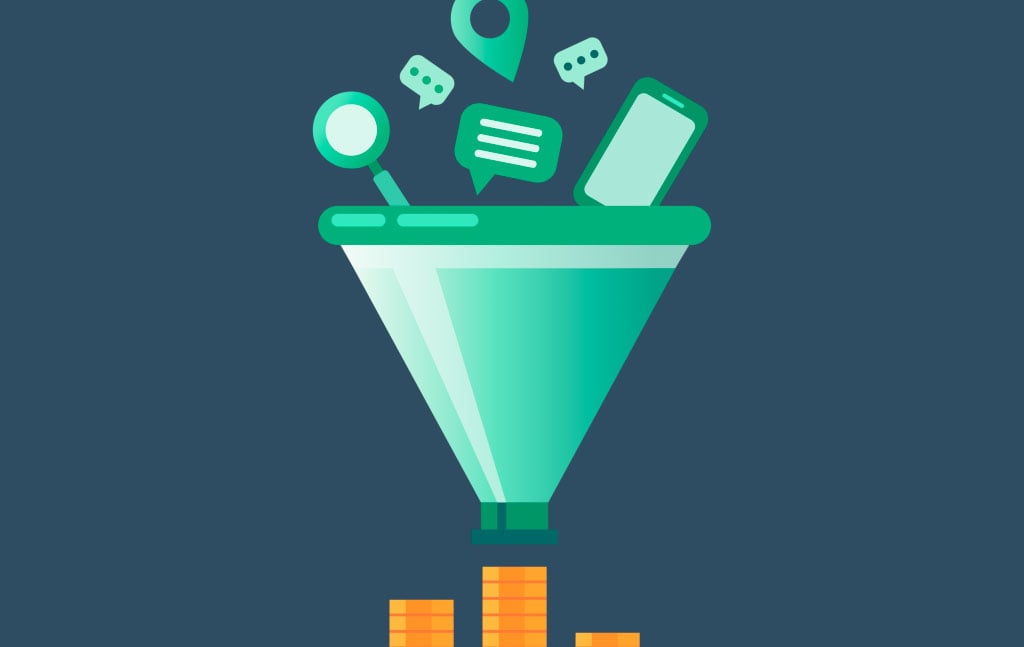By Guest Contributor | June 10, 2021

See why top ecommerce brands use Miva’s no-code platform to run
multiple stores, manage massive catalogs, and grow their revenue.
Abandoned cart strategies are hugely effective at recovering customers, decreasing cost per acquisition (CPA), and increasing overall profit.
But what if we told you your abandoned cart campaign is only part of your customer recovery strategy, and you could multiply these results by simply expanding your reach?
As shoppers work their way through your website, this is typically an indication of where they’re at in the buyer journey. Most basic abandoned cart strategies focus on one stage in the journey: the consideration phase.
And while this is hugely effective at recovering lost sales from customers who added products to their cart and made it to the checkout page, it neglects customers who didn’t make it that far.
Don’t get us wrong; customers who make it to the consideration phase are your hottest leads and ripe for retargeting. But when you spend significant time, money, and resources attracting visitors to your website, your cold and warm leads are worth a punt, too.
To convert the maximum number of website visitors into customers, you must cast your net wider than the consideration phase of the buyer journey and start fishing in the busiest and most critical stage: the awareness stage.
We call this the full-funnel approach to customer recovery...and we’re here to show you how to do it.
For us to explain the importance of a full-funnel approach to customer recovery, let’s take a moment to look at the three main phases of the customer funnel on your ecommerce website.
The awareness phase spans from a customer landing on your website until they add a product into their shopping cart.
Cart abandonment can’t happen in the awareness phase because customers haven’t added anything to their cart. However, website abandonment can occur, which you may have heard called “browse abandonment” or “discovery failure”.
The consideration phase spans from a customer adding a product to their cart until they reach the “buy” button on the checkout page.
Cart abandonment can happen at any point during this phase.
The conversion phase is when someone clicks the buy button on the checkout page and places an order. Cart abandonment can no longer happen here. However, that’s not to say the customer won’t return and abandon their cart during the awareness or consideration phase in the future.
A basic cart abandonment campaign targets customers at the end of the consideration phase—customers who add a product to their cart and save their email address during the checkout. However, this means it also neglects shoppers who leave:
And, since the customer funnel is top-heavy, your basic cart abandonment campaign is neglecting the majority of your website visitors. But, it doesn’t have to.
To re-engage and recover customers during the awareness phase, you have three great strategies at your fingertips:
First, it’s important to disrupt a customer’s attempt to exit your website by re-engaging their attention and bringing it back to your store.
You can achieve this through:
Next, you want to provide customers with an alternative to abandonment that gets them closer to your checkout page.
Ways to do this include:
These tactics have the added potential of increasing average basket size and order value, especially when tying discounts and free shipping into minimum spend requirements.
Finally, when a customer abandons your website during the awareness phase, re-target them with communications that remind, re-engage, return, and recover them.
Tools to help include:
And, since these customers haven’t yet committed to a product in their basket, you can use these communications to upsell a variety of products relevant to their browsing history.
The key message behind a full-funnel approach to customer recovery is that instead of focusing on just one portion of the buyer journey, you can focus on the whole funnel to recover and convert as many customers as possible.
And, even better, the above tactics can help reduce overall abandonment, increase average basket size, and improve the relationship you have with customers, too.
Contributed by the Editorial Team of Miva Partner CartStack.
Back to topNo worries, download the PDF version now and enjoy your reading later...
Download PDF Guest Contributor
Guest Contributor
The Miva ecommerce platform powers some of the web’s most spectacular online stores—stores that benefit every day from our relationships with our partners and other valued providers. We work with our network of experts to create fresh, insightful content for all independent merchants. Interested in contributing to the Miva blog? Click below to learn more about our co-marketing opportunities.
Visit Website